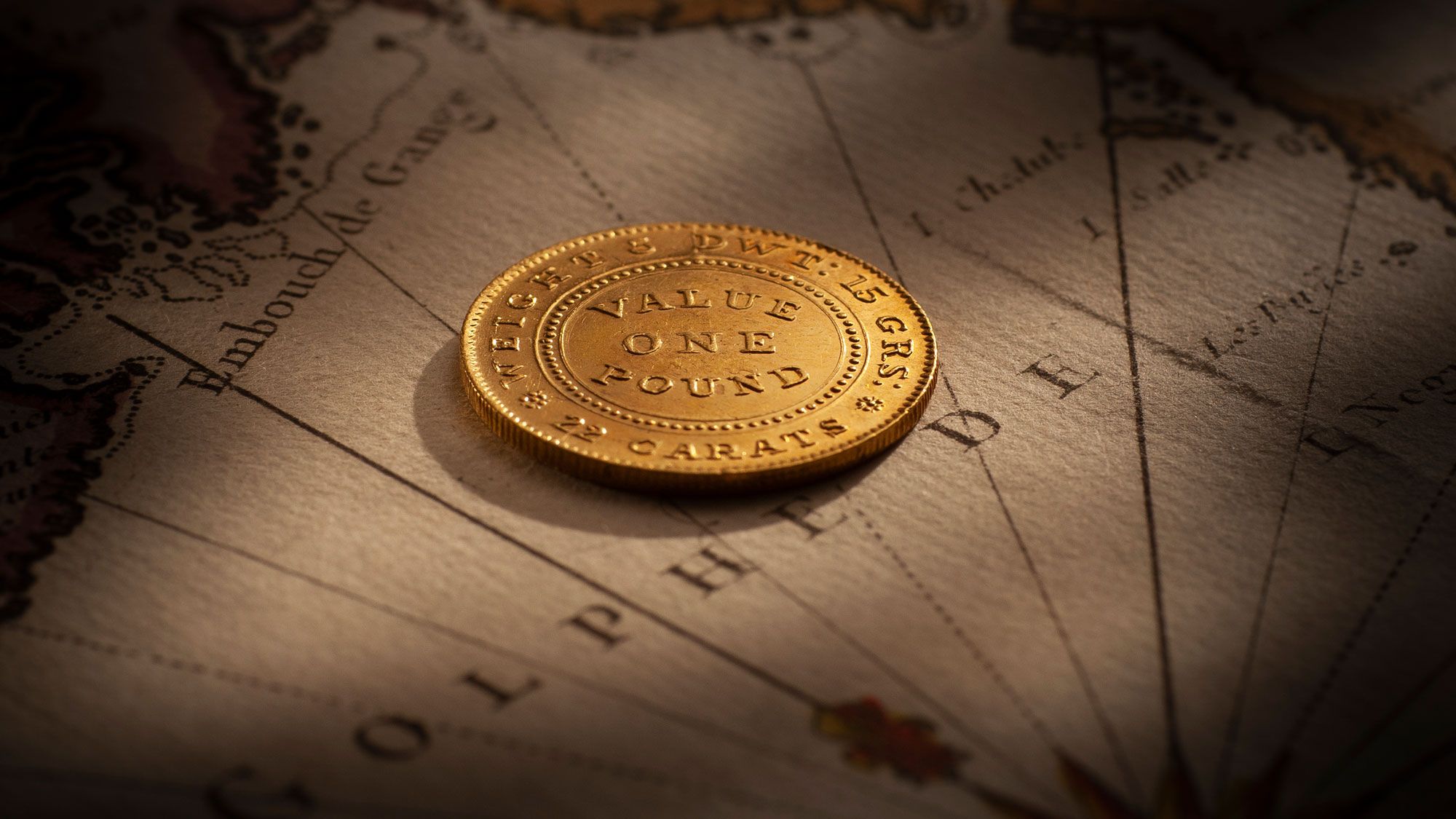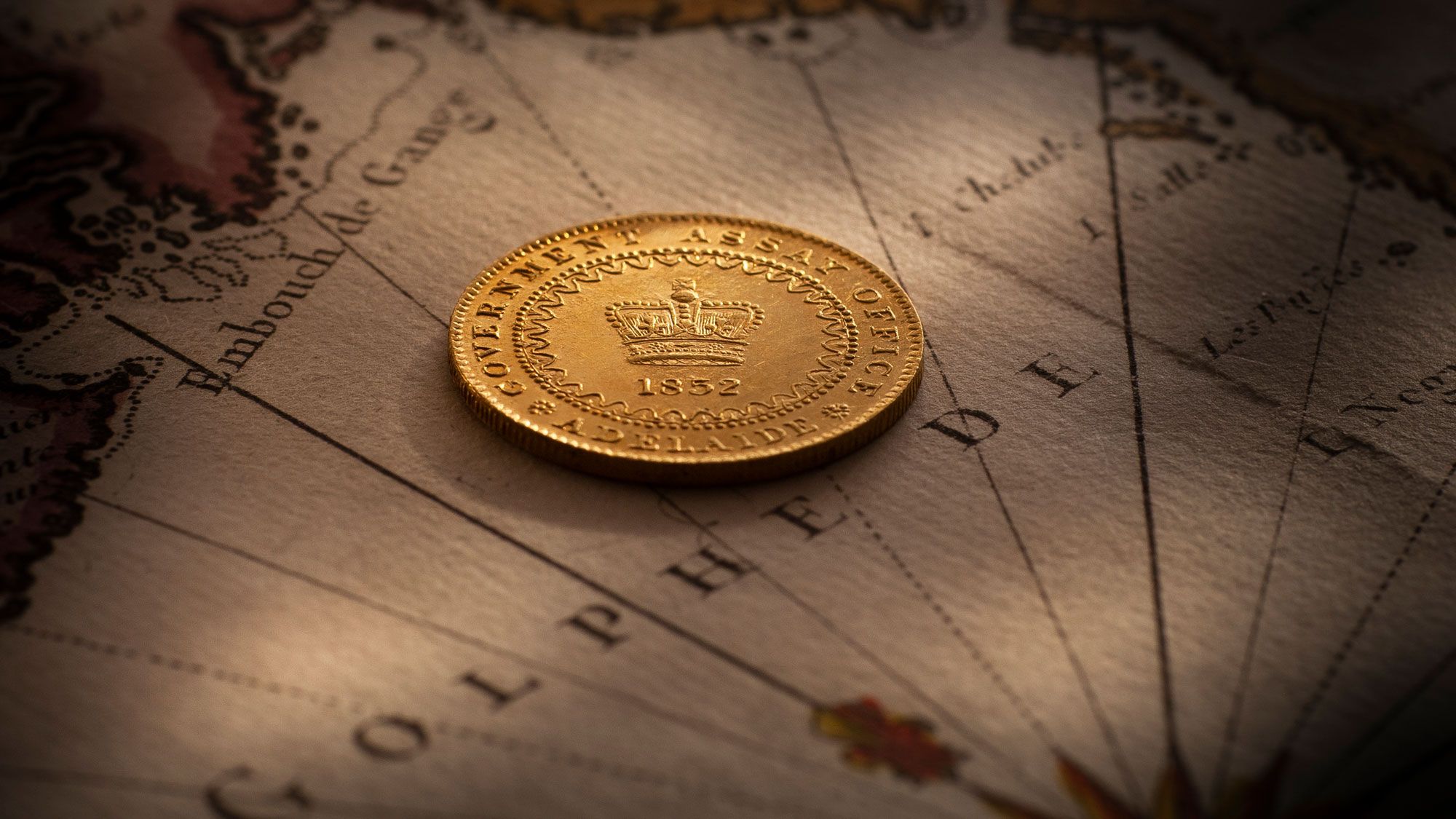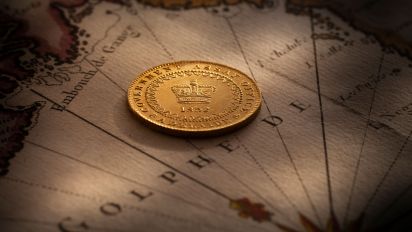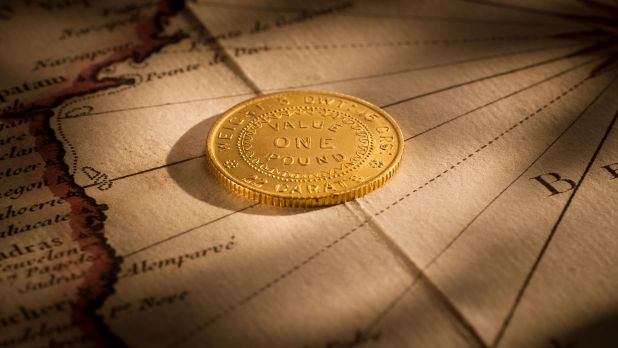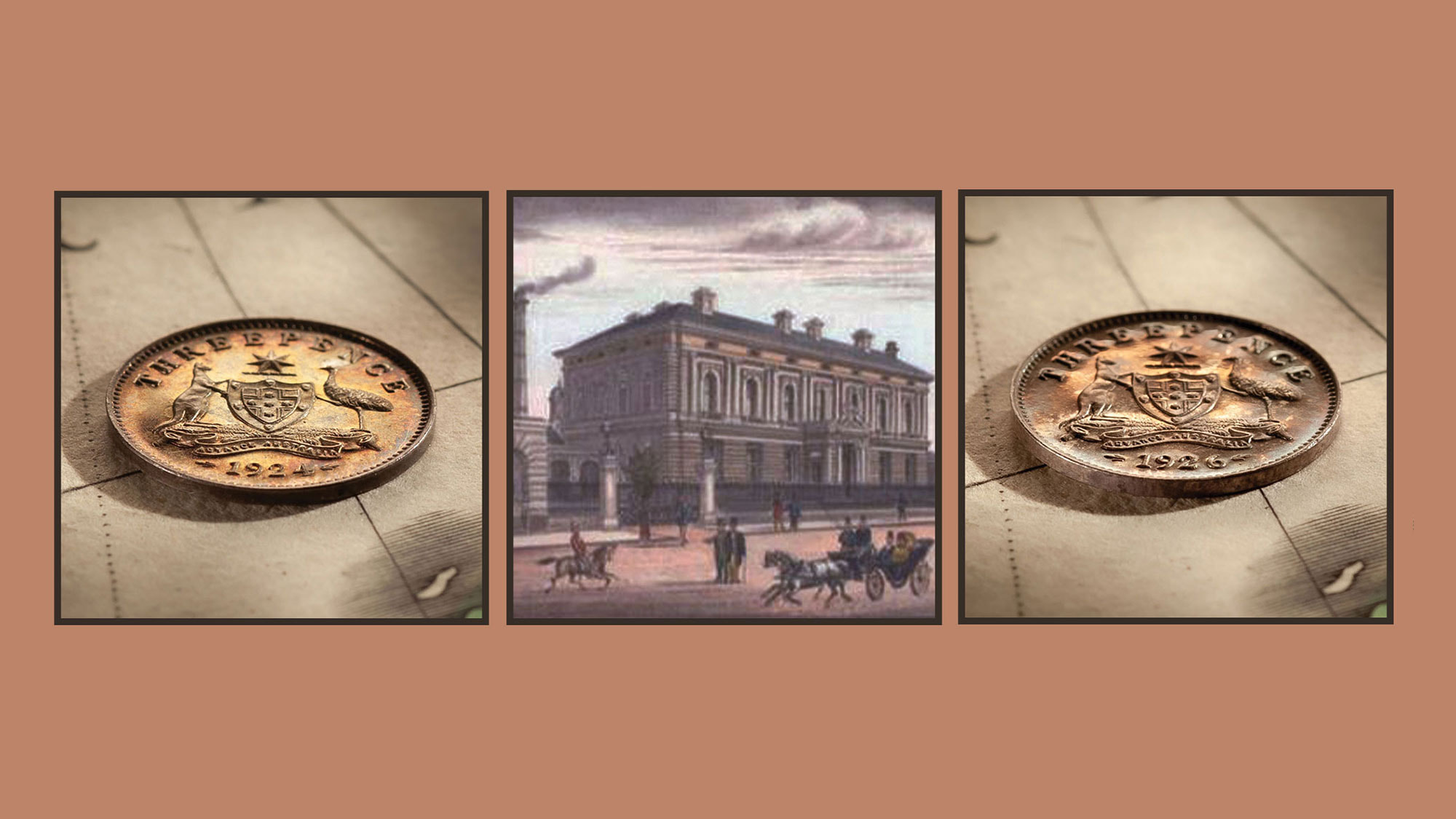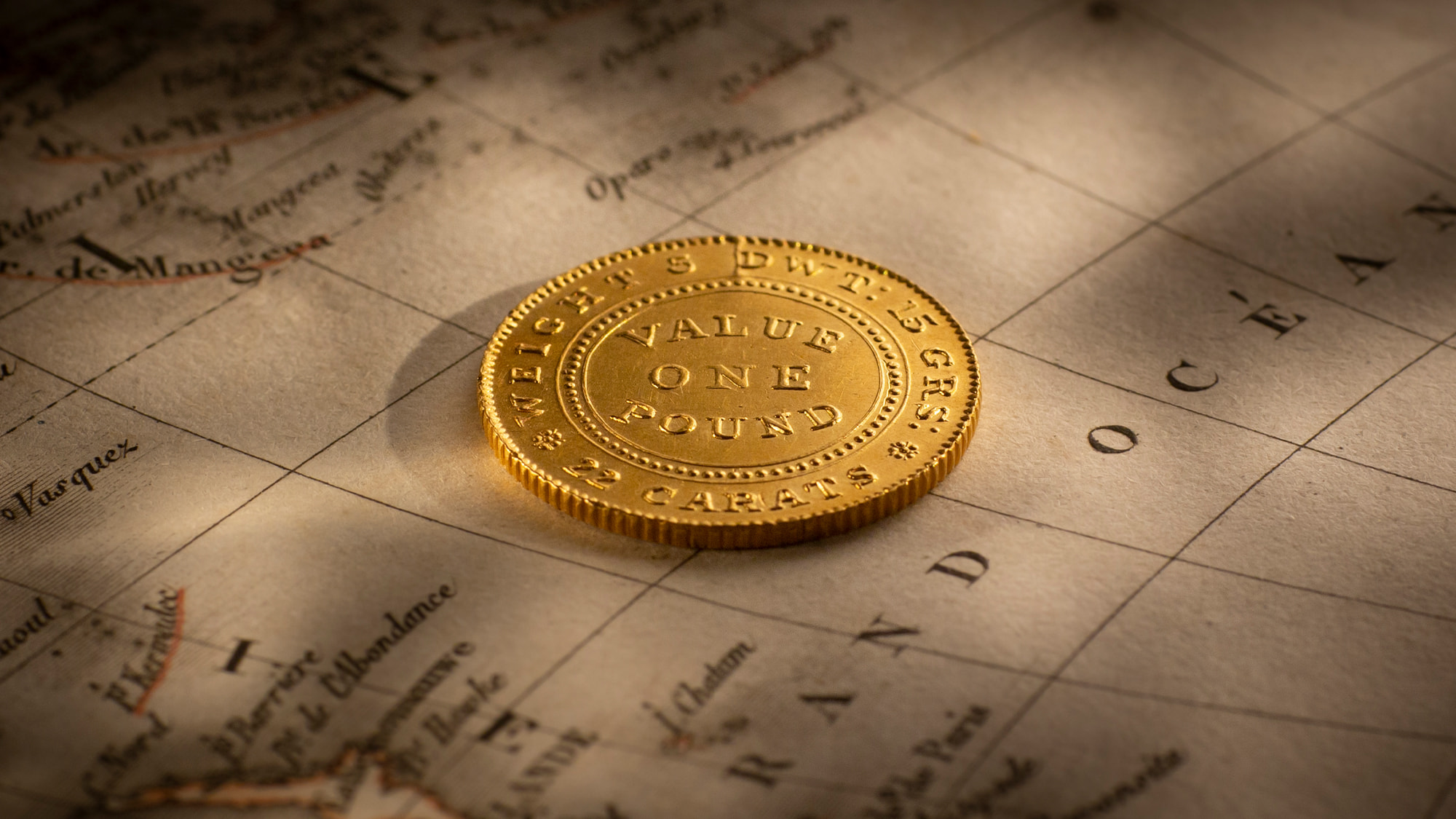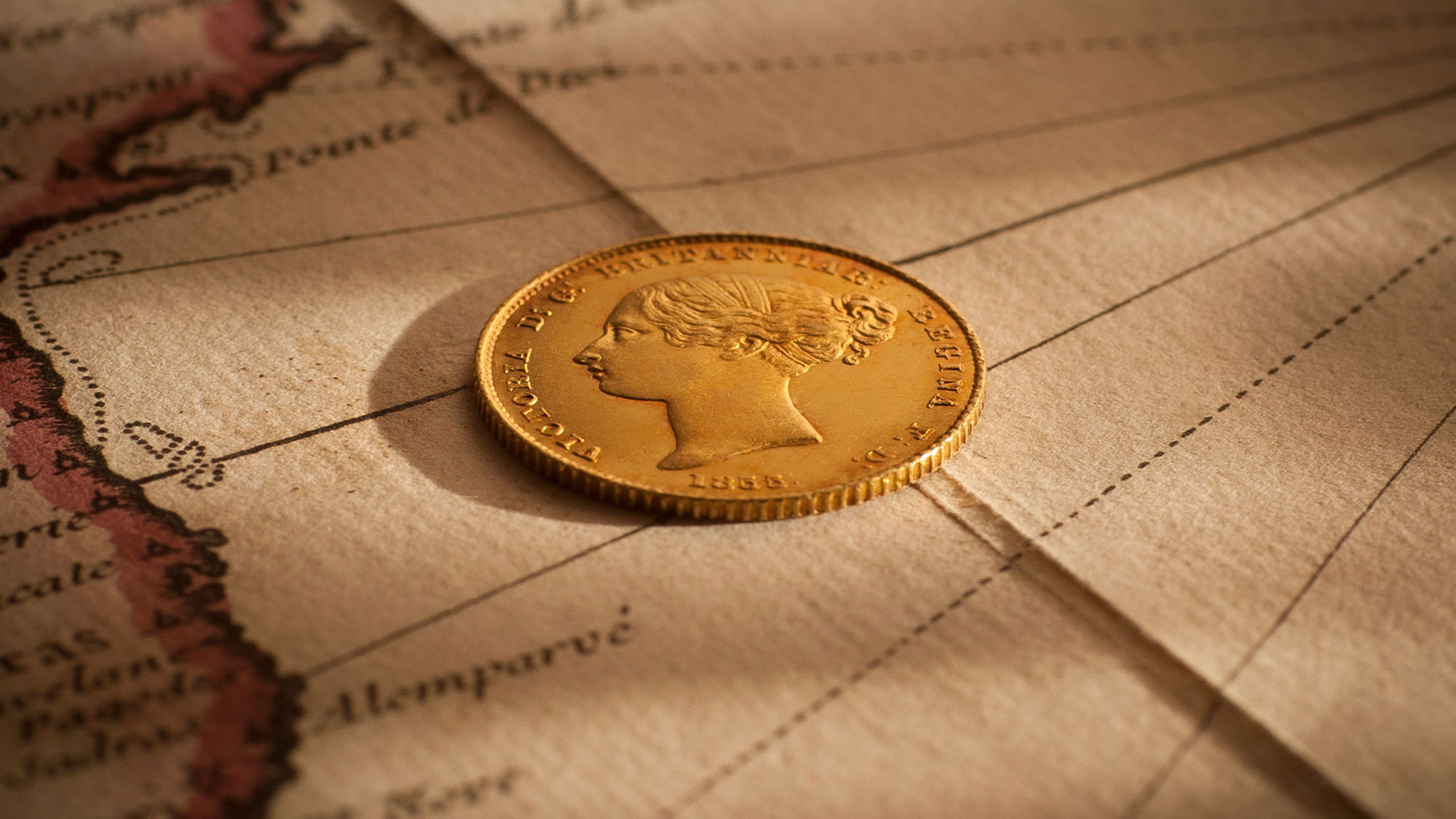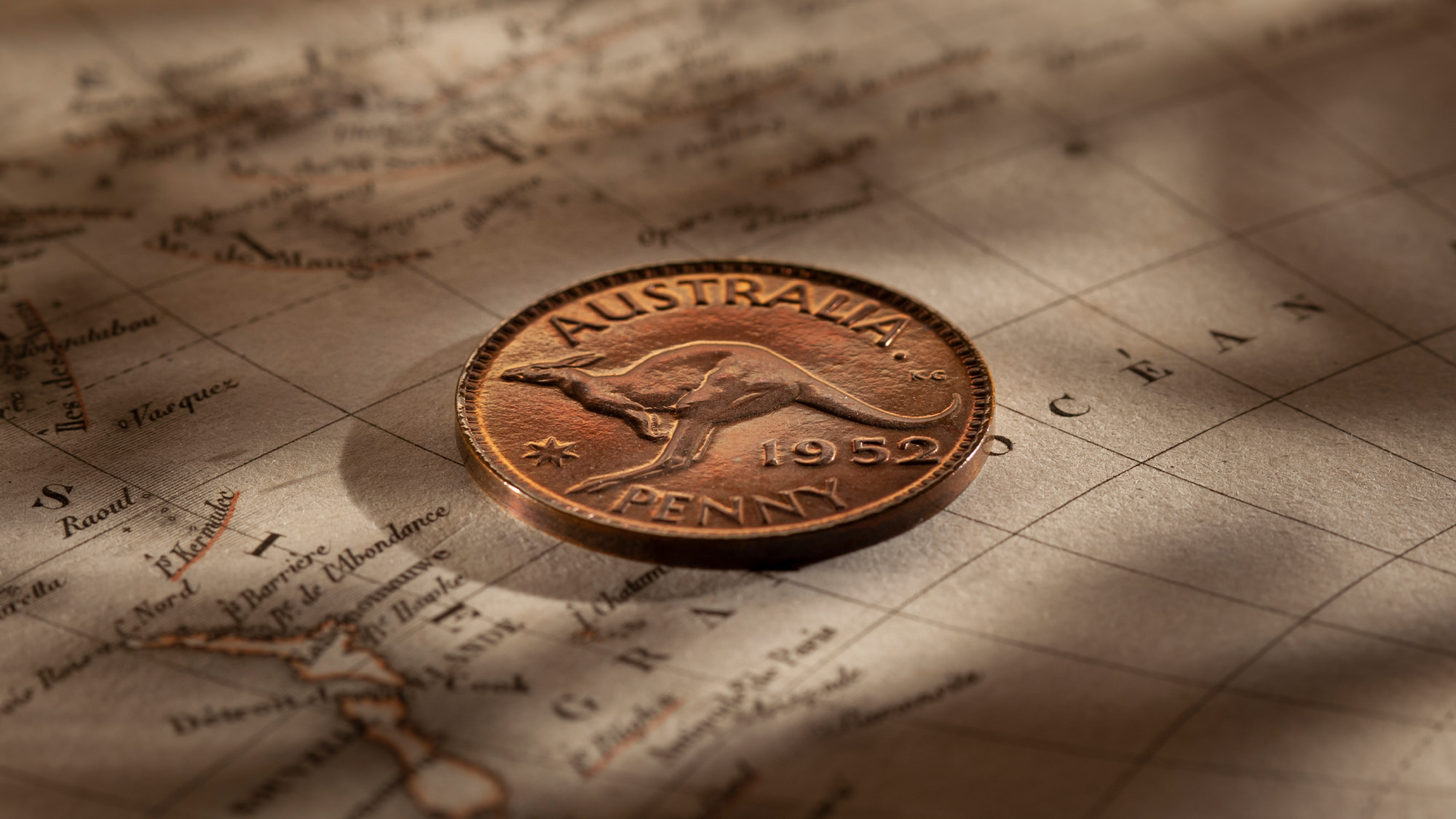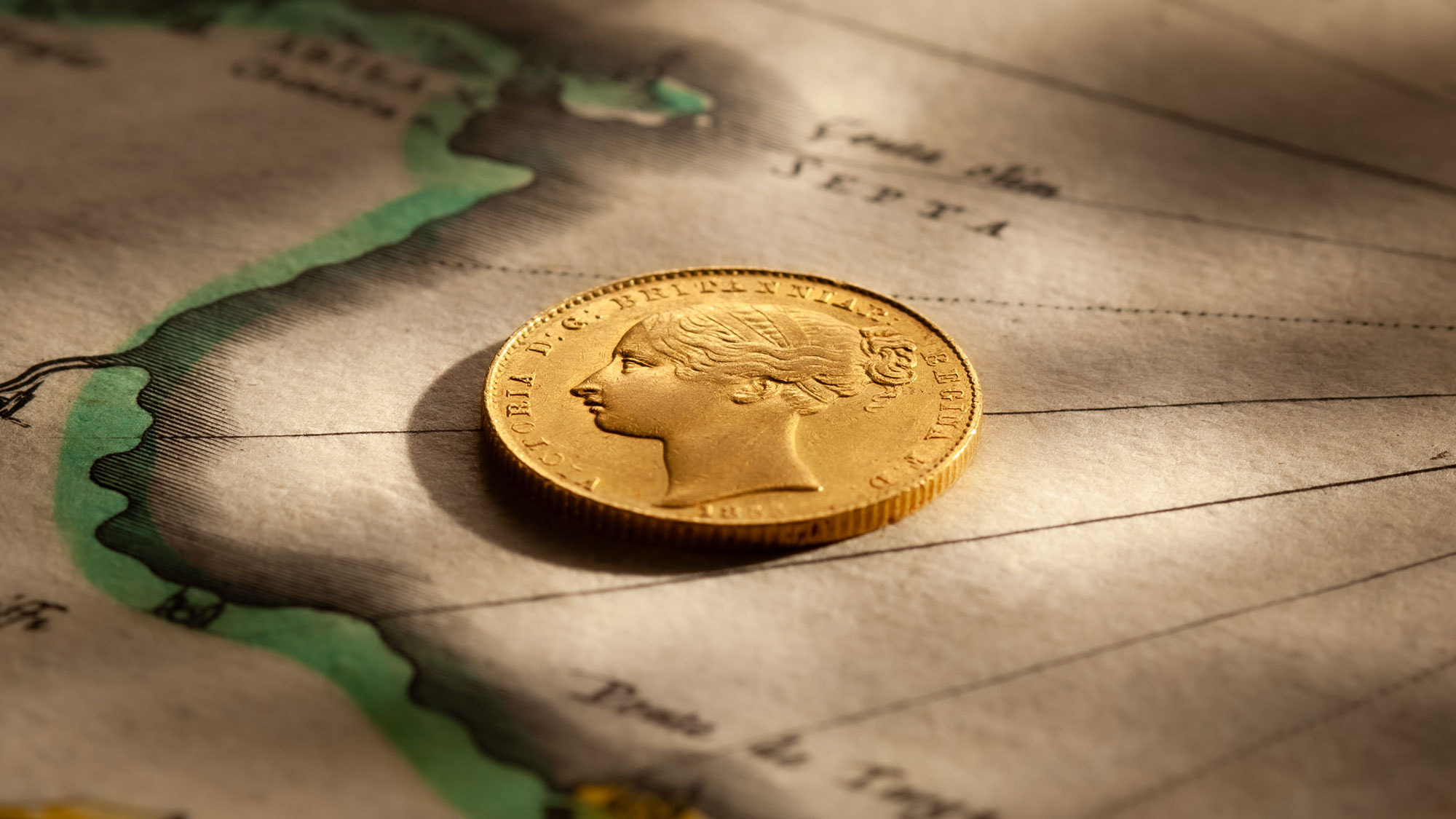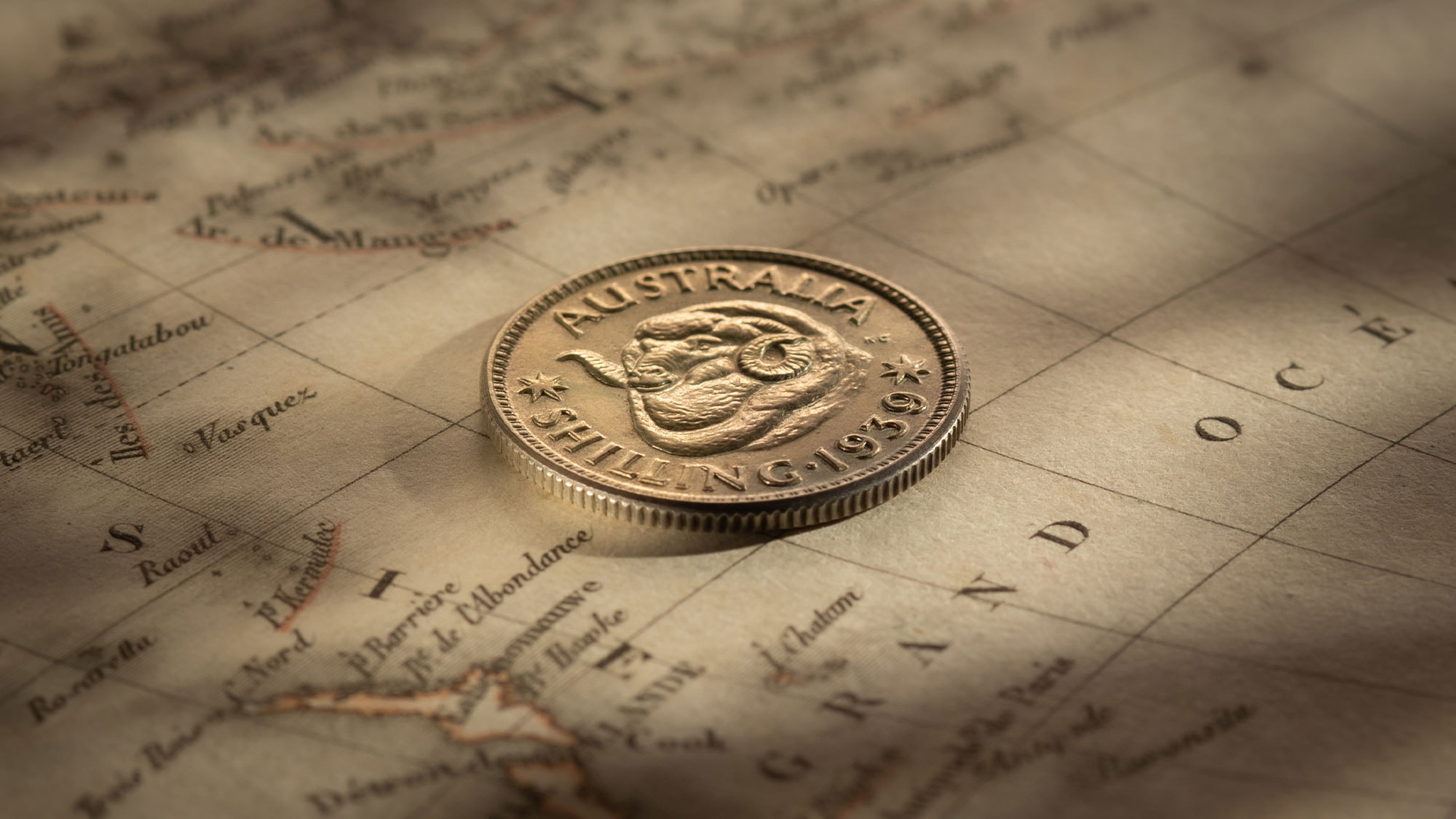The discovery of gold in 1851 is one of the most extraordinary chapters in Australian history, transforming the economy and society and marking the beginnings of a modern multi-cultural Australia. It also led to the creation of the nation’s first gold coin, the 1852 Adelaide Pound.

Word of the discovery of gold spread like wildfire across the country and overseas. First was the rush to Ophir near Bathurst in early 1851 and the even greater rush to Ballarat in August of the same year.
Then in quick succession came the rich finds throughout central Victoria, Queensland, Northern Territory and finally the bonanza in Western Australia.
No colony was immune from the dramatic effects of the discovery of gold.
Those that were rich in gold. And those, such as the colony of South Australia, that was devoid of the precious metal. Its economy collapsed due to the mass exit of manpower lured to the Victorian gold fields.
Adelaide lost almost half its male population within the first three months of the first big gold strike near Ballarat. Also gone its cash resources. About two-thirds of the available coin travelled out of the state.
As the two main pillars of national activity, labour and capital, literally walked out, prices plummeted, property plunged, mining scrip nosedived, and Adelaide took on the air of a ghost town, with row after row of tenantless houses.
The cash-strapped banks pressed their debtors for cash payments, but as most debtors were merchants with their capital tied up, disaster beckoned.
By late 1851, genuine panic gripped those who had stayed behind as the total and complete insolvency of Adelaide looked real.
Out of desperation the Government offered a reward of one thousand Pounds for the discovery of a gold field in South Australia.
None was found.
South Australia’s problems were further compounded because there was no method available to convert the gold nuggets the diggers had brought back from Victoria into a form that could be used for monetary transactions.
Calls were made for the establishment of a Government mint and the issuing of a coinage, but this was viewed as being in direct violation of the Royal Prerogative. Coining was beyond the powers and privileges of any local authority.
On 9 January 1852, over 130 leading businessmen and a further 166 merchants met with Lieutenant Governor Sir Henry Young and pressured him to start up a mint to convert the raw gold into coin. The intention was that the mint would purchase gold from the Victorian fields at a higher price than paid in Melbourne.
There are some doubts as to who suggested an Assay Office and stamped bullion. What is known is that the establishment of a similar office had been introduced into the legislature of New South Wales in 1851. It was defeated mainly due to the opposition of the banks.
Although Young realised that only Royal approval could initiate a move to establish a mint, he was also aware that the survival of the colony was at stake.
He found a loophole in the Government's regulations. While the Governors were not allowed to assent in her majesty’s name to any bill affecting the currency of the colony, an accompanying paragraph that stated … “unless urgent necessity exists requiring such to be brought into immediate operation”.
The “urgent necessity” clause paved the way for the South Australian Legislative Council to pass the 1852 Bullion Act.
A special session of the Legislative Council was convened on the 28 January 1852.
An enactment was proposed that allowed the Assaying of gold into ingots; the Council seeking to deflect Royal disapproval by striking gold ingots rather than sovereigns.
The ingots were intended to form a currency that would back the banknote issues of the banks as if they were gold coin. And be used by the banks to increase their note circulation based on the amount of assayed gold deposited.
The Act was as daring, as it was contentious, in that it made the banknotes of the three South Australian banks a Legal Tender, under specified conditions.
It drew condemnation from the eastern states. Melbourne’s Argus condemned the Act as dangerous, radically unsound and interfering with the natural laws of commerce. But these protests were motivated by self-interest, as South Australia posed a real threat to the Victorian economy by re-directing capital and labour away from the Victorian gold fields.
The Bullion Act No 1 of 1852 has a record unique in Australian history. A special session of Parliament was convened to consider it. Parliament met at noon on the 28 January 1852.
The Bill was read and promptly passed three readings and was then forwarded to the Lieutenant Governor and immediately received his assent.
It was one of the quickest pieces of legislation on record, with the whole proceedings taking less than two hours. Thirteen days after the passing of the Act, on 10 February 1852, the Government Assay office was opened. Its activities were supported by a state government initiative to provide armed escorts to bring back the gold from the Victorian diggings.
Within a week 600 gold coins (known today as the 1852 Adelaide Pound) had been delivered to the South Australian Banking Company, 100 of which were sent to London.
The Bullion Act had a lifetime of only twelve months. By the time the legislative amendments were passed to enact the production of gold coins, the Act had less than three months to run. As a consequence, only a small number of Adelaide Pounds were struck (24,768) and very few actually circulated.
When it was discovered that the intrinsic value of the gold contained in each piece exceeded its nominal value, the vast majority were promptly exported to London and melted down.
That goes a long way towards explaining why so few Adelaide Pounds survive today (approximately 250) and why the highest-quality examples command such high prices.
